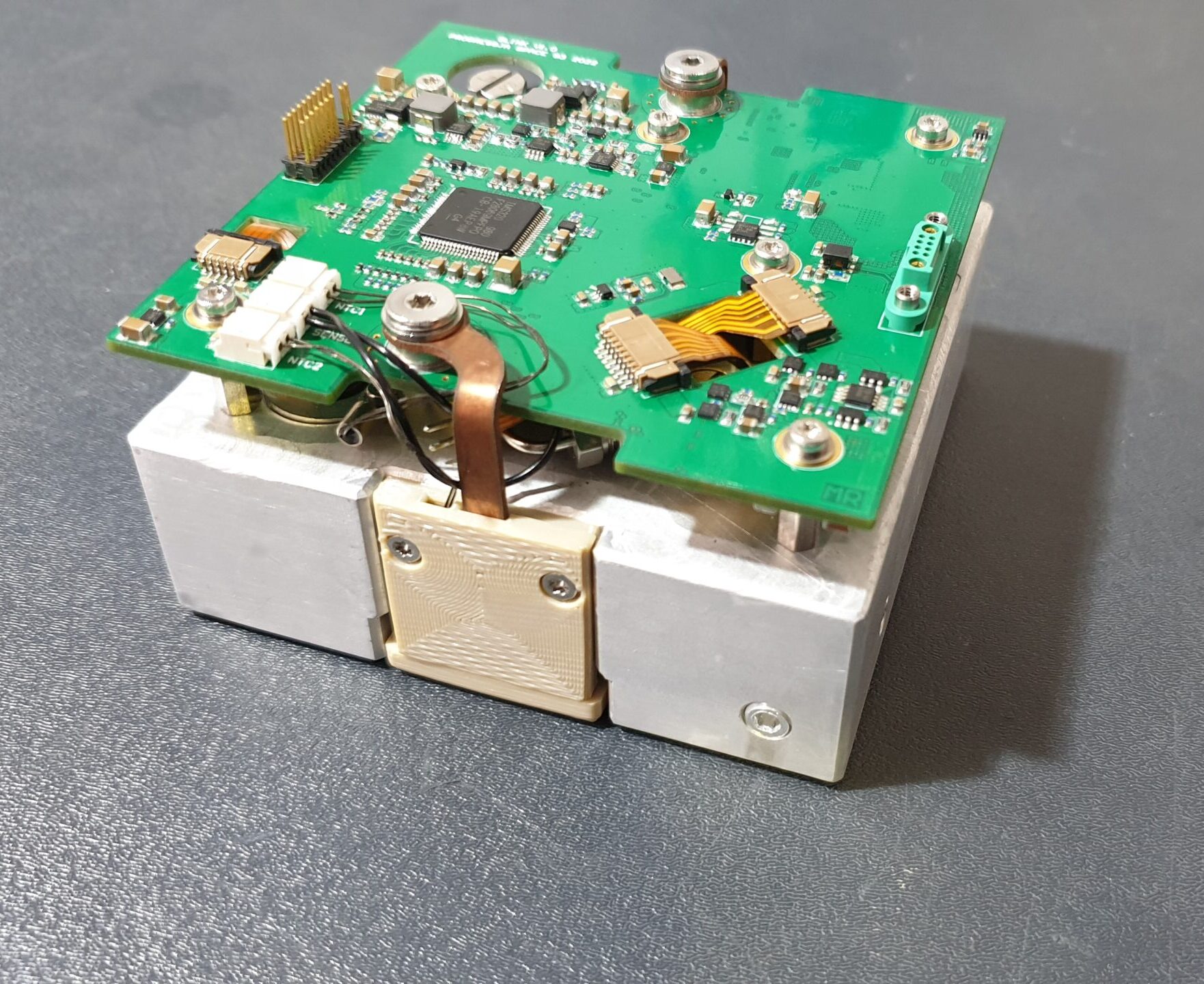




Progresja Space implements the project subsized from the European Funds „Electrothermal resistojet thruster for nano- and microsatellites.”
The project aims to design and bring to market an advanced propulsion system tailored for nano- and microsatellites. A unique innovation lies in the utilization of a high-temperature flow-heating element, specifically a rhenium capillary, integrated into a resistojet-type electrothermal thruster. This design minimizes heat losses, offering a compelling combination of high performance and structural simplicity.
In the first phase, the project’s main focus is on developing and rigorously testing the 'hot-section,’ essentially the core of the resistojet thruster that includes the capillary and thermal insulation. We employ an in-house developed molten-phase rhenium electrodeposition technique for manufacturing the capillary, which has reached proof-of-concept status. Alternatively, commercially available rhenium alloy capillaries may be used. The primary objective is to pinpoint any challenges and validate solutions through testing of the thruster’s laboratory prototype.
The second phase encompasses the engineering of additional engine modules like fuel tanks, electronic components, and a dosing system. These modules will be consolidated into a compact form ranging from 0.25U to 1U, forming the engine’s engineering model, which will then undergo rigorous testing.
The third and final stage involves an in-space testing campaign, culminating in a live demonstration of the engine’s capabilities. To achieve this, comprehensive engine integration and a lift-off service (0.25U or 0.5U) will be procured as a so-called 'hosted payload.’ This step is essential for reaching TRL 9, thus enabling market launch.

Project timeline
Kick-off
Project was officially started in January 2021.
Breadboard model
Successful testing of the breadboard model in the vacuum conditions.
Engineering model
EM model was manufactured and assembled. Test campaign is in progress.
-
Prime:
Progresja Space
-
Subcontractor:
-
-
Funding source
European Funds (NCBR)
-
EU co-funding
2 079 355,22 PLN
-
Timeline
2021 - 2023
